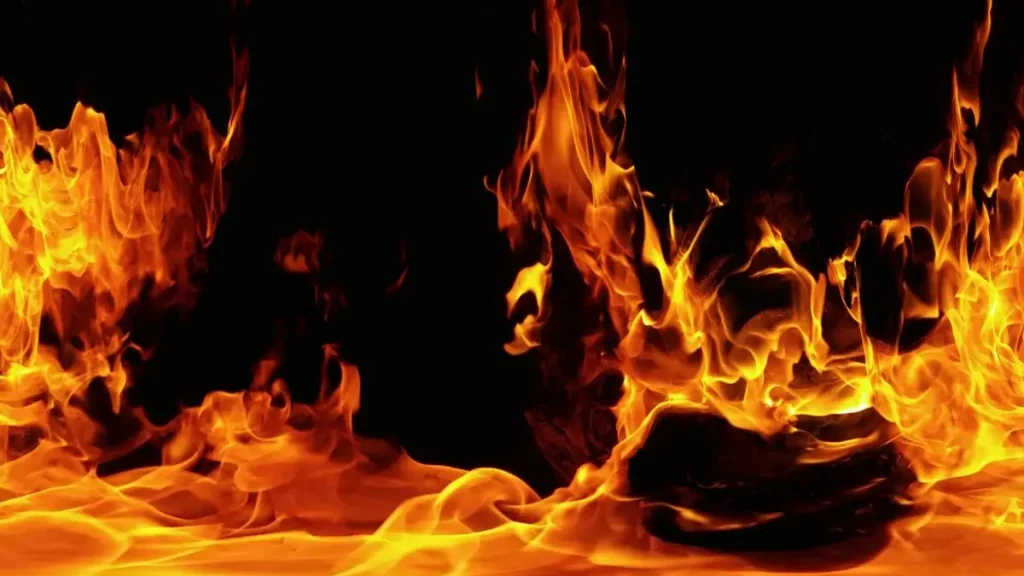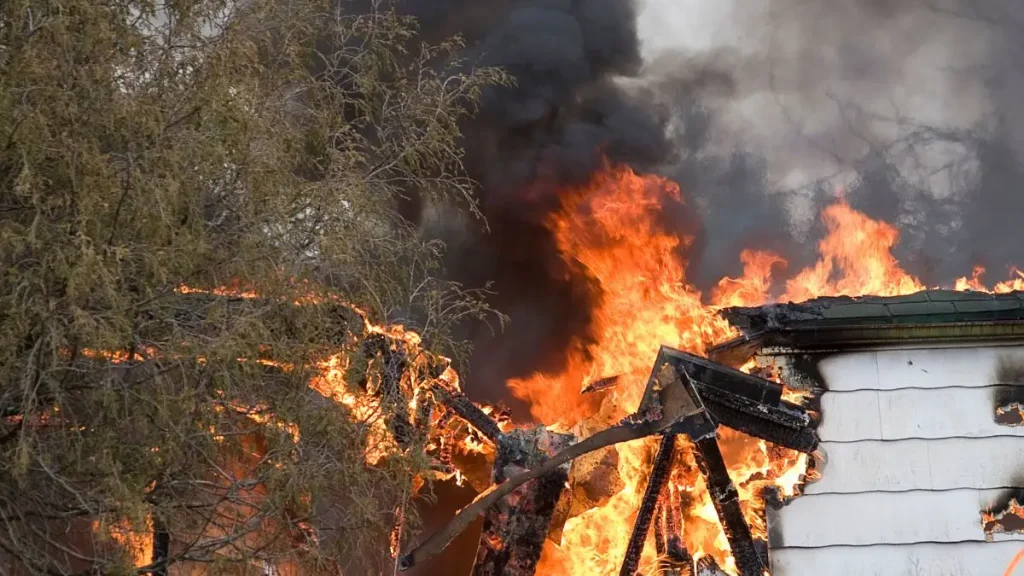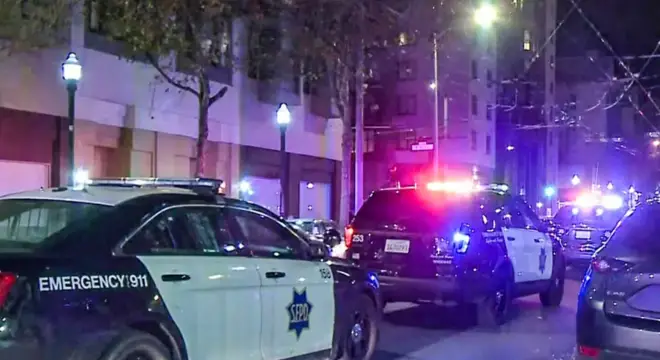San Antonio House Fire Destroys Home, Family Dog Dies
I’ve covered dozens of house fires over the years, but some stories hit harder than others. Late Tuesday night in San Antonio’s Northeast Side, a family’s life changed in minutes.
Just before midnight, a fire broke out in a two-story home near Panther Peak and Stahl Road. By the time firefighters got there, smoke was already pouring from the upper floor. Two residents made it out alive. Their dog didn’t.
The fire started downstairs and spread fast—traveling up the walls into the second story, where the dog was later found. It was trapped before it even had a chance to run.
The damage left the home unlivable overnight. Fire crews stayed on-site into the early hours, trying to figure out what went wrong.
This isn’t just a news story—it’s a reminder of how quickly life can flip. A quiet night. A sudden fire. And now a family mourning more than just lost belongings.
What would you do if this happened to you? Do you have a fire plan—for yourself, your loved ones, and your pets?
How the Fire Spread So Fast—and Why That Matters for You
I’ve seen it time and again: people assume they’ll have time to react during a house fire. But this one on San Antonio’s Northeast Side proves how fast it can all go wrong.
According to investigators, the fire started on the first floor. From there, it didn’t wait—it moved straight up the wall cavities into the second story. When firefighters arrived, smoke was already thick upstairs.
That’s likely why the family’s dog never made it out. The smoke beat it to the top floor before anyone could even think about rescue.
Here’s what you need to know: in many fires, it’s not flames that kill first—it’s the smoke. And it moves faster than you think. If your fire alarms are only downstairs or if your escape routes aren’t clear, you’re already behind.
Ask yourself right now: Would you know how to get out in under 2 minutes? Would your pet?
The Emotional Cost You Don’t See on the News
You can replace walls, floors, and furniture. But losing a pet in a fire like this? That kind of pain stays with you.
I’ve spoken to families after house fires, and it’s almost always the same thing—they feel guilty. Guilty they couldn’t get back in. Guilty they didn’t have a plan for their pets.
This family is displaced now. They got out, yes. But they’re not going back to that house tonight—or anytime soon. And they lost someone they loved.
If you’ve got pets at home, this story should shake you. I say that not to scare you, but to push you. Because the time to think about escape plans isn’t when the smoke alarm’s already going off.
Don’t wait until it’s too late to plan for those you love—especially the ones who can’t open doors.
Stories like the recent fatal fire in Maine, where one person was found dead inside a home, are more common than you’d think—and each one is a painful reminder.
Why Pets Often Don’t Survive House Fires?
Let’s be honest. Most of us don’t think about our pets when we’re testing smoke alarms or setting up fire escape routes—if we even have one.
But here’s the truth: pets hide when they’re scared. And smoke rises. That’s a deadly combo.
According to News 4 San Antonio, firefighters found the dog upstairs, trapped in a part of the house where the fire had spread the fastest. The pet didn’t have a chance to escape.
The sad part? This happens way more often than it should. The National Fire Protection Association reports that around 500,000 pets are affected by house fires each year in the U.S.
So what can you do right now?
- Keep pet carriers or leashes near exits
- Use a “Pet Inside” alert sticker on windows
- Include pets in your fire drill—even just once a year
It’s not overkill. It’s responsible. Because once the fire starts, your pet won’t think—they’ll freeze.
I recently came across a WhatsApp channel that shares real-time updates and insights on fire incidents across the country—helpful if you want to stay alert and learn from what’s happening elsewhere.
What Fire Investigators Are Looking For Right Now?

Right now, fire officials are combing through what’s left of the home, trying to figure out what sparked this tragedy.
And as someone who’s covered too many of these cases, I can tell you—they’ll likely start with the usual suspects:
- Electrical wiring or overloaded outlets
- Kitchen appliances left on
- Candles or open flames
- Heating equipment, especially during seasonal transitions
The fire appears to have started at the back of the house, on the first floor. That helps narrow the focus. But until the official report comes out, it’s still open.
For you, though, this is a moment to check your own home.
Are you overloading any plugs behind furniture? Leaving the dryer running overnight? Using space heaters without clearance?
The best time to stop a house fire is before it ever starts.
In Kennewick, for instance, two firefighters were treated for heat exhaustion while battling a home blaze—fires don’t just threaten families, they hit responders too.
What Happens to Families After Fires Like This?
Let’s not sugarcoat it—getting out safely is only the first step.
This family has lost more than their home. They’ve lost routine, comfort, their pet, and maybe even their sense of safety. They’re likely staying with friends, at a shelter, or in a hotel right now.
Most people don’t realize how fast that spiral happens. One minute you’re watching TV. Next, you’re watching your home disappear behind fire hoses.
Support systems matter a lot here. Local organizations like the Red Cross often step in to help displaced families. If neighbors are involved, you’ll sometimes see donation drives or meal trains pop up through Facebook groups or Next door.
If you ever see a story like this in your neighborhood, don’t just scroll past. A small gesture—an extra blanket, a warm meal, a place to stay—can be the thing that helps someone start to rebuild.
And if you’re the one facing that fire? Knowing your community’s there can mean everything.
Have you or someone you know ever experienced something like this? I’d love to hear how your community came together—drop a comment below.
The Fire’s Cause Is Still Unknown — But There Are Clues

As of now, investigators haven’t released an official cause for the fire. But having followed so many of these cases, I can tell you what they’ll likely be piecing together.
They’ll look at the back right side of the home—where most of the fire damage was concentrated. Was there an overloaded circuit? A forgotten appliance? A flammable material near a heat source?
The San Antonio Fire Department stayed on the scene through early Wednesday morning, checking for all those signs. These cases often take days—or even weeks—before a confirmed cause comes out.
But here’s the part you can control: using this time as a reality check for your own home.
Ask yourself:
- Do I know what’s plugged into that extension cord behind the couch?
- Have I cleaned the lint from the dryer this month?
- Would I smell smoke in my sleep?
You don’t have to wait for someone else’s tragedy to be your wake-up call.
These kinds of sudden fires aren’t rare—just a few weeks ago, a man was found dead inside a burning home in Clayton.
Want to Avoid This? Here’s a Quick Fire Safety Reset
Look, I know life gets busy. You’ve got bills, routines, maybe kids or aging parents to care for. But fire safety isn’t about paranoia—it’s about preparation.
If a fire broke out in your home tonight, would everyone know what to do? Including your pets?
Here’s a quick checklist I use personally every few months. It’s simple, takes under 10 minutes, and could save your life:
- Test all your smoke alarms—especially near bedrooms
- Keep an escape plan where everyone can see it
- Put leashes or carriers near main exits
- Check cords and outlets for overheating
- Never leave space heaters or candles unattended
- If you have kids, make escape drills a fun game—they’ll remember better that way
Most fires don’t give you a warning. But planning ahead gives you a fighting chance.
Final Thoughts
You and I both know it’s easy to read a headline like this and move on. But that fire on the Northeast Side? It could’ve been any one of us.
A family lost their pet. Their home is gone. And it all happened in minutes.
So here’s what I’d ask you to do today:
Walk through your home. Check your alarms. Think through your exits. Talk to your family—yes, even your kids—about what to do if the smoke ever comes.
Because it’s not enough to be lucky. You’ve got to be ready.
For more home safety insights and real fire incident coverage, visit Build Like New. Every story is a lesson in prevention.
Disclaimer: This article is based on publicly available news reports and fire department updates as of August 2025. Details about the investigation may change as new information becomes available. For official updates or safety guidance, please refer to the San Antonio Fire Department or trusted emergency services.


